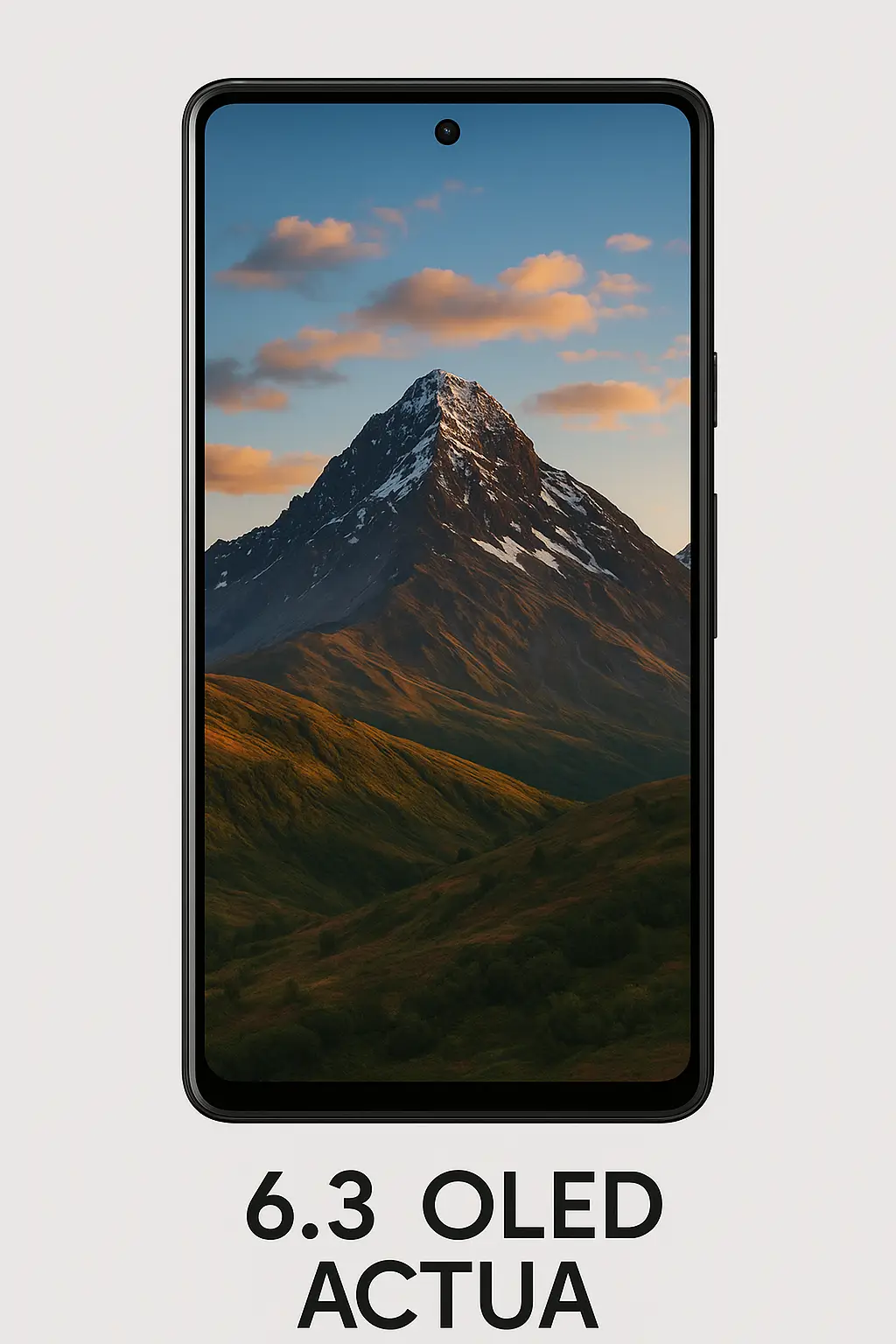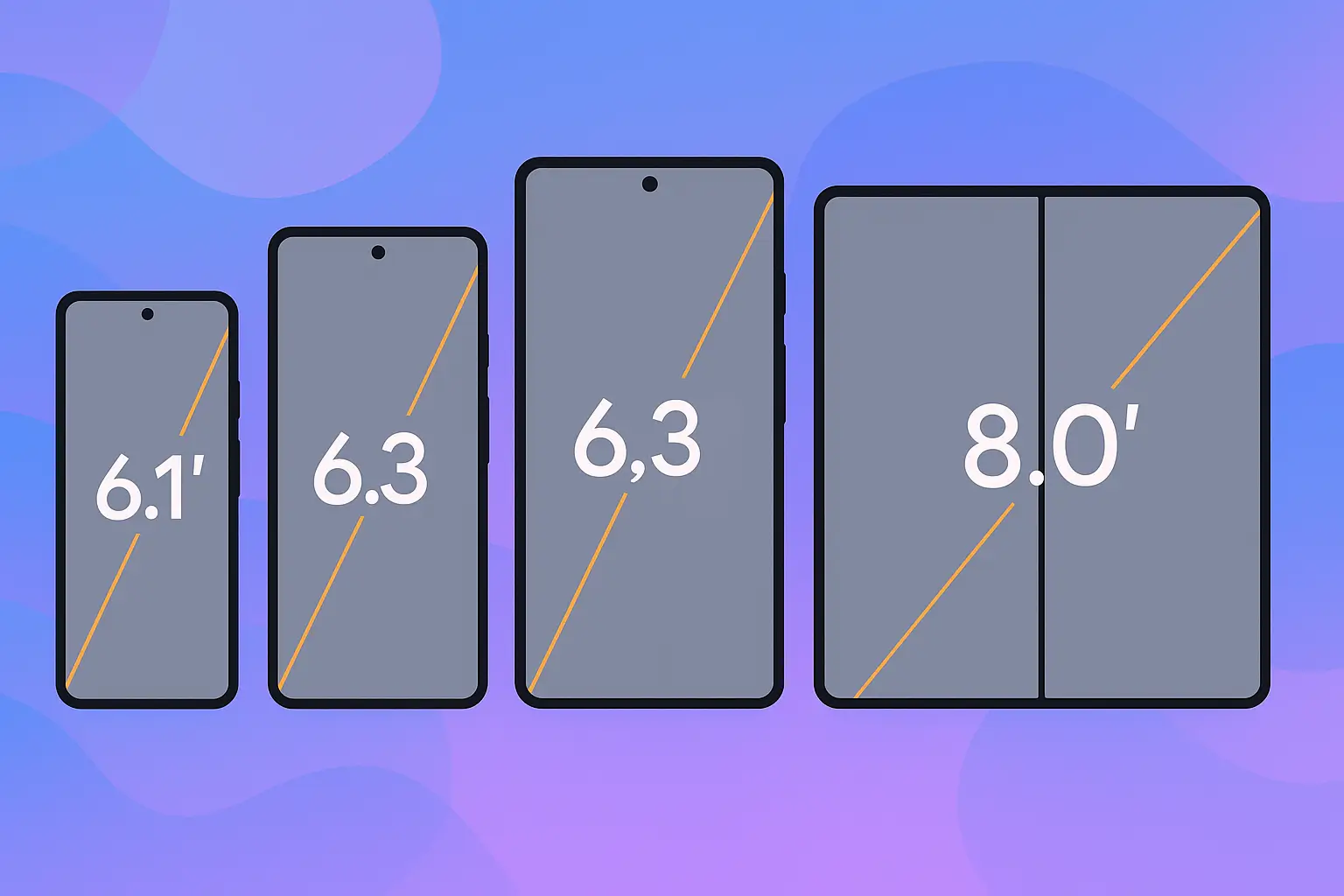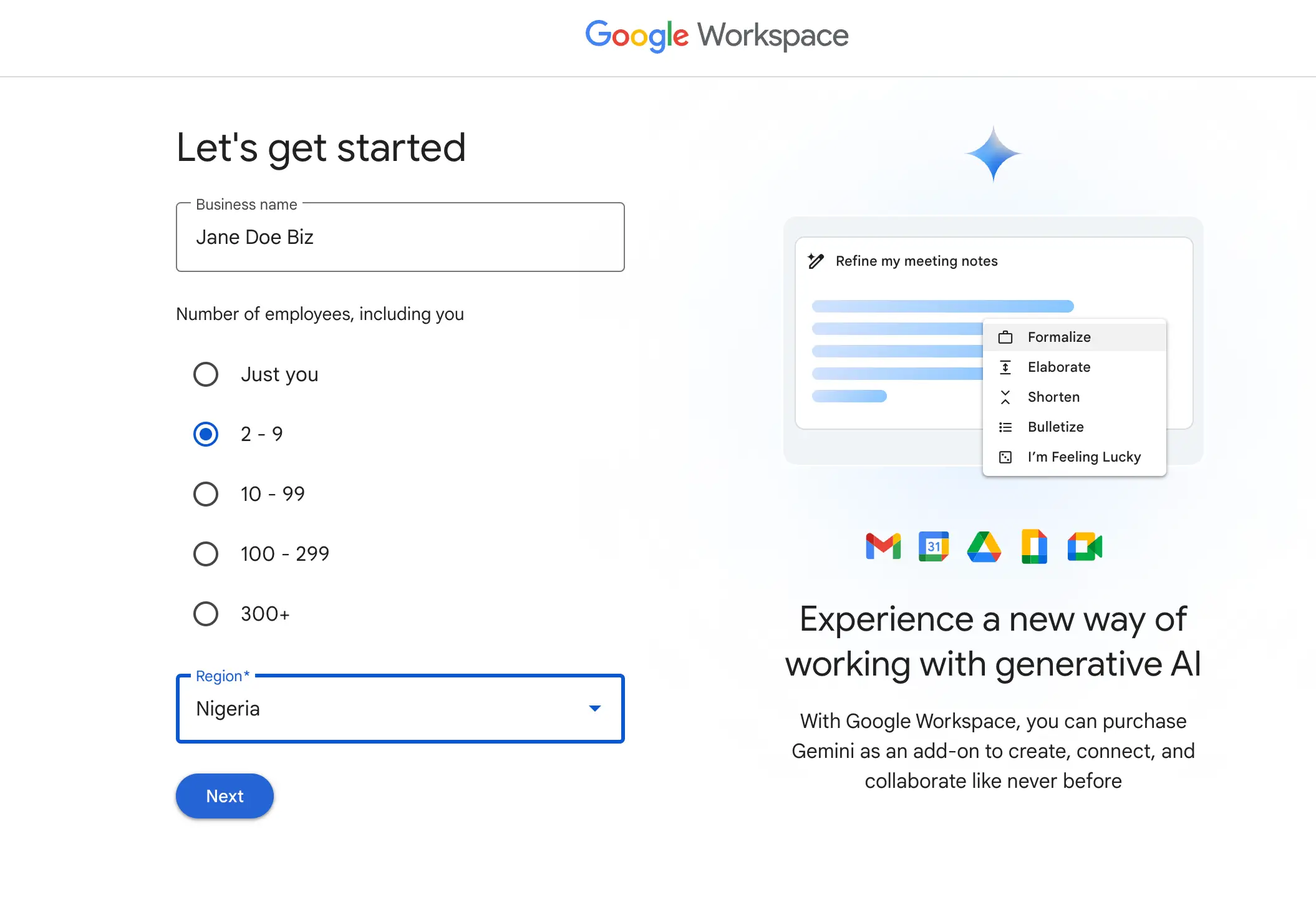Google Pixel phones have consistently delivered some of the best displays in the smartphone market, combining cutting-edge screen technology with optimized software experiences. Whether you’re a consumer looking to buy your next Pixel phone, a developer building mobile apps, or a designer creating responsive layouts, understanding Pixel display specifications is crucial for making informed decisions.
This comprehensive guide covers every Google Pixel phone’s screen size, resolution, and display technology to help you choose the perfect device or optimize your content for the Pixel ecosystem.
Quick Reference: All Google Pixel Models at a Glance
| Model | Release Year | Screen Size | Resolution | PPI | Display Type | Refresh Rate |
|---|---|---|---|---|---|---|
| Google Pixel 9a | 2025 | 6.3″ | 1080 × 2424 | 422 | OLED Actua | 60-120Hz |
| Google Pixel 9 | 2024 | 6.3″ | 1080 × 2424 | 422 | OLED Actua | 60-120Hz |
| Google Pixel 9 Pro | 2024 | 6.3″ | 1280 × 2856 | 495 | LTPO OLED Super Actua | 1-120Hz |
| Google Pixel 9 Pro XL | 2024 | 6.8″ | 1344 × 2992 | 486 | LTPO OLED Super Actua | 1-120Hz |
| Google Pixel 9 Pro Fold | 2024 | 8.0″ (unfolded) | 2076 × 2152 | 373 | LTPO OLED | 1-120Hz |
| Google Pixel 8a | 2024 | 6.1″ | 1080 × 2400 | 429 | OLED Actua | 60-120Hz |
| Google Pixel 8 | 2023 | 6.2″ | 1080 × 2400 | 428 | OLED Actua | 60-120Hz |
| Google Pixel 8 Pro | 2023 | 6.7″ | 1344 × 2992 | 489 | LTPO OLED Super Actua | 1-120Hz |
| Google Pixel Fold | 2023 | 7.6″ (unfolded) | 2208 × 1840 | 378 | OLED | 120Hz |
| Google Pixel 7a | 2023 | 6.1″ | 1080 × 2400 | 429 | OLED | 90Hz |
| Google Pixel 7 | 2022 | 6.3″ | 1080 × 2400 | 416 | OLED | 90Hz |
| Google Pixel 7 Pro | 2022 | 6.7″ | 1440 × 3120 | 512 | LTPO OLED | 10-120Hz |
| Google Pixel 6a | 2022 | 6.1″ | 1080 × 2400 | 429 | OLED | 60Hz |
| Google Pixel 6 | 2021 | 6.4″ | 1080 × 2400 | 411 | OLED | 90Hz |
| Google Pixel 6 Pro | 2021 | 6.7″ | 1440 × 3120 | 512 | LTPO OLED | 10-120Hz |
Understanding Google Pixel Display Technologies
Actua Display: What Makes Standard Pixel Screens Special
Actua displays appear on regular Pixel models like the Pixel 8, Pixel 9, and Pixel 9a. These screens use OLED technology, which means each pixel lights up individually instead of relying on a backlight like older LCD screens.
Better Colors: Actua displays show colors more accurately than most phone screens. When taking photos or watching videos, colors look natural rather than oversaturated. The screens can display the same color range used by professional photographers and video editors, which means photos and videos appear as intended by their creators.

Smarter Brightness: These displays automatically adjust brightness based on surroundings and usage patterns. Instead of just using a basic light sensor, the phone learns when and how brightness is typically adjusted. On sunny days, the screen can get very bright (2,700 nits) – much brighter than older phones – making it easy to read even in direct sunlight.
Adaptive Speed: The screen refresh rate changes depending on what’s being displayed. When scrolling through apps or playing games, the screen updates 120 times per second for smooth motion. When viewing static content like photos or reading, it slows down to 60 updates per second to save battery. This can extend daily usage by about 15%.
Super Actua Display: Premium Screens for Pro Models
Super Actua displays are found only on Pixel Pro phones. These screens include LTPO technology, which provides better performance and battery life compared to standard displays.
Sharper Images: Super Actua screens pack more pixels into the same space. The Pixel 9 Pro XL has 486 pixels per inch compared to 422 on regular models. This means text appears sharper, photos show more detail, and everything looks crisper. The difference is most noticeable when reading small text or viewing detailed images.
Better Battery Management: LTPO technology allows the screen to refresh as slowly as once per second when showing static content like the always-on display. This uses significantly less battery than traditional screens. When action picks up – like gaming or scrolling – it immediately speeds up to 120 refreshes per second.
Exceptional Brightness: These screens can reach 3,000 nits of brightness, which is among the brightest available on any smartphone. This means the screen remains clearly visible even in the brightest outdoor conditions, and HDR videos display with the full range of brightness and color they were designed to show.
LTPO Technology: How Variable Refresh Rates Save Battery
LTPO stands for Low-Temperature Polycrystalline Oxide. This technology is built into the screen itself and allows for more precise control over how fast the display updates.
How It Works: Traditional phone screens refresh at a fixed rate, like 60 or 120 times per second, regardless of what’s displayed. LTPO screens can vary this rate dramatically based on content. When reading an article, the screen might update just once per second. When gaming, it instantly ramps up to 120 updates per second.
Real-World Benefits: This flexibility translates to meaningful battery savings. The always-on display – which shows the time and notifications when the phone is idle – uses less than 1% of battery per hour with LTPO technology. On phones without this technology, the same feature typically uses 3-5% per hour.
Seamless Operation: The refresh rate changes happen automatically and invisibly. Users don’t need to manually adjust settings or think about it. The phone analyzes what’s being displayed and adjusts accordingly – whether that’s matching a video’s frame rate or slowing down for static content.
Pixel Display Evolution: Generation by Generation
Pixel 9 Series (2024-2025): The Current Champions
The latest Pixel 9 family represents Google’s most advanced display technology:
Pixel 9a launched in March 2025, features a 6.3-inch Actua display that’s 35% brighter than the Pixel 8a at 2,700 nits peak brightness. At $499, it delivers flagship-level display quality at a mid-range price.
Pixel 9 maintains the same 6.3-inch form factor as the 9a but with enhanced color accuracy and better HDR performance. The display has been rated the best in its class and is 35% brighter than the Pixel 8.
Pixel 9 Pro and 9 Pro XL feature Super Actua displays with higher resolution and LTPO technology. The Pixel 9 Pro XL has the brightest screen ever tested, reaching an astounding peak brightness of 2,469 nits.
Pixel 8 Series (2023-2024): Refined Excellence
The Pixel 8 generation marked significant improvements in display brightness and efficiency. The Pixel 8 Pro introduced enhanced LTPO technology with better power management, while the Pixel 8a brought premium display features to the mid-range segment.
Pixel 7 and Earlier: Foundation Years
Earlier Pixel generations established Google’s display philosophy of natural color reproduction and smart brightness adaptation. While lacking some modern features like LTPO, these displays remain excellent for daily use.
Screen Size Categories: Finding Your Perfect Fit
Compact (6.1″ – 6.3″)
Perfect for one-handed use and pocket-friendly portability:
- Pixel 6a, 7a, 8a: 6.1″ displays ideal for users prioritizing comfort
- Pixel 7, 9, 9a, 9 Pro: 6.3″ offers slightly more screen real estate while remaining manageable
Large (6.4″ – 6.8″)
Ideal for media consumption and productivity:
- Pixel 6: 6.4″ pioneered the modern Pixel display size
- Pixel 8: 6.2″ compact flagship experience
- Pixel 6 Pro, 7 Pro, 8 Pro: 6.7″ premium large-screen experience
- Pixel 9 Pro XL: 6.8″ ultimate viewing experience
Foldable (7.6″ – 8.0″)
Tablet-like experience in a phone form factor:
- Pixel Fold: 7.6″ unfolded, pioneering Google’s foldable journey
- Pixel 9 Pro Fold: 8.0″ unfolded, refined foldable experience

Developer and Designer Considerations
Resolution Categories and Design Implications
Understanding Pixel display resolution categories is crucial for developers and designers creating responsive mobile applications that perform optimally across Google’s device ecosystem.
FHD+ Category (1080 × 2400 and 1080 × 2424): This resolution category covers the majority of Pixel devices including the Pixel 6a, 7, 7a, 8, 8a, 9, and 9a. With a consistent 20:9 aspect ratio, this category provides predictable design parameters for UI layout. The 422-429 PPI range ensures text remains sharp and images display clearly without requiring multiple asset versions.
Development Recommendations: Use density-independent pixels (dp) for all UI elements to ensure consistent sizing across different devices. Design primary layouts for this resolution category first, as it represents the largest portion of the Pixel user base. Optimize image assets for ~420 PPI displays to ensure crisp rendering without unnecessarily large file sizes.
QHD+ Category (1280 × 2856, 1344 × 2992, 1440 × 3120): Premium Pro models use higher resolutions with varying aspect ratios around 19.5:9. The higher pixel density (486-512 PPI) allows for more detailed UI elements and better text rendering, particularly beneficial for apps involving detailed graphics, professional tools, or extensive text reading.
Optimization Strategies: Provide higher-resolution assets for these displays to take advantage of the increased pixel density. Consider implementing adaptive UI layouts that can display more information on larger, higher-resolution screens. Test extensively on both resolution categories to ensure consistent user experience across the Pixel ecosystem.
Foldable Considerations: Foldable Pixel devices present unique challenges with their dual-display setup and varying aspect ratios. The outer display typically follows standard smartphone proportions, while the inner display approaches square ratios when unfolded.
Adaptive Refresh Rate Development
Modern Pixel devices with LTPO displays support variable refresh rates from 1Hz to 120Hz, requiring developers to optimize applications for efficient performance across this range.
Frame Rate Optimization: Design animations and UI transitions to work smoothly at various refresh rates. Implement frame rate detection to ensure animations scale appropriately whether the display is running at 60Hz, 90Hz, or 120Hz. Use Android’s refresh rate APIs to query current display settings and optimize accordingly.
Battery Efficiency: Leverage the display’s ability to reduce refresh rates during static content presentation. Minimize unnecessary screen updates when displaying static content, allowing the LTPO display to drop to lower refresh rates automatically. This optimization can improve battery life by 15-20% in typical usage scenarios.
Gaming Considerations: For gaming applications, implement dynamic refresh rate management that can scale performance based on scene complexity. During intensive gaming sequences, utilize the full 120Hz capability, but reduce refresh rates during menu screens or static gameplay elements.
👉🏾 Checkout best private and encrypted note app: EchoVaults.
Color Space and HDR Implementation
Pixel displays support multiple color spaces and HDR formats, requiring careful consideration for media-rich applications and professional tools.
Color Space Management: Implement proper color space handling for applications that display or edit photos and videos. Support sRGB for web content, DCI-P3 for professional media work, and Rec. 2020 for future-proofing. Use Android’s ColorSpace APIs to ensure accurate color reproduction across different Pixel models.
HDR Content Delivery: For applications serving video content, implement HDR10+ support to take advantage of Pixel displays’ HDR capabilities. Ensure proper tone mapping for different peak brightness levels across various Pixel models, from 1,000 nits on older devices to 3,000 nits on current Pro models.
Professional Application Support: Applications targeting creative professionals should implement wide color gamut support and accurate color calibration. Provide options for users to select appropriate color spaces based on their workflow requirements, whether for web publishing, print preparation, or video production.
Responsive Design Patterns for Pixel Ecosystem
Creating responsive designs that work seamlessly across the diverse Pixel ecosystem requires careful planning and implementation of flexible layout systems.
Breakpoint Strategy: Implement responsive breakpoints that account for Pixel’s common screen sizes: 6.1-6.3″ (compact), 6.4-6.8″ (large), 7.6-8.0″ (foldable). Design flexible layouts that can adapt to these categories while maintaining usability and visual hierarchy.
Density-Independent Design: Use Android’s density-independent pixel (dp) system consistently throughout your application. This ensures UI elements maintain appropriate sizes across different pixel densities, from the 373 PPI of foldable displays to the 512 PPI of Pro models.
Edge-to-Edge Implementation: Modern Pixel devices feature minimal bezels and rounded corners, requiring careful consideration of edge-to-edge design implementation. Use proper window insets handling to ensure content doesn’t interfere with system UI elements or get cut off by rounded corners.
Navigation Adaptation: Implement adaptive navigation patterns that work effectively across different screen sizes and aspect ratios. Consider bottom navigation for compact displays and side navigation or tab bars for larger screens and foldable devices.
Buying Guide: Which Pixel Display is Right for You?
For Budget-Conscious Users: Pixel 9a
At just $499, the Pixel 9a brings value, helpfulness and AI smarts that are hard to beat with a bright 6.3-inch Actua display and 120Hz refresh rate.
For Mainstream Users: Pixel 9
The standard Pixel 9 offers the perfect balance of size, quality, and features with its 6.3-inch Actua display.
For Power Users: Pixel 9 Pro XL
The largest single-screen Pixel with a 6.8-inch Super Actua display, LTPO technology, and the brightest screen available.
For Innovation Seekers: Pixel 9 Pro Fold
The 8.0-inch foldable display provides a unique tablet-like experience when unfolded.
Future-Proofing Your Pixel Choice
Software Support
All modern Pixel phones come with seven years of OS updates, security updates and Pixel Drops, ensuring your display technology remains current with the latest Android features.
Display Longevity
Pixel OLED displays are designed for longevity with:
- Burn-in protection algorithms
- Adaptive brightness to prevent excessive wear
- High-quality Samsung and LG display panels
The Pixel Display Advantage
Google Pixel phones offer some of the most advanced and well-calibrated displays in the smartphone industry. From the budget-friendly Pixel 9a with its bright Actua display to the premium Pixel 9 Pro XL with its record-breaking Super Actua screen, there’s a Pixel display perfect for every user.
Whether you prioritize color accuracy for photography, smooth performance for gaming, or simply want the best viewing experience for media consumption, Pixel displays deliver exceptional quality across every price point. The combination of advanced OLED technology, intelligent software optimization, and Google’s commitment to long-term support makes any Pixel phone a smart display investment.
For developers and designers, the Pixel ecosystem offers predictable design patterns and consistent quality across models, making it easier to create optimized experiences for Google’s growing user base.

